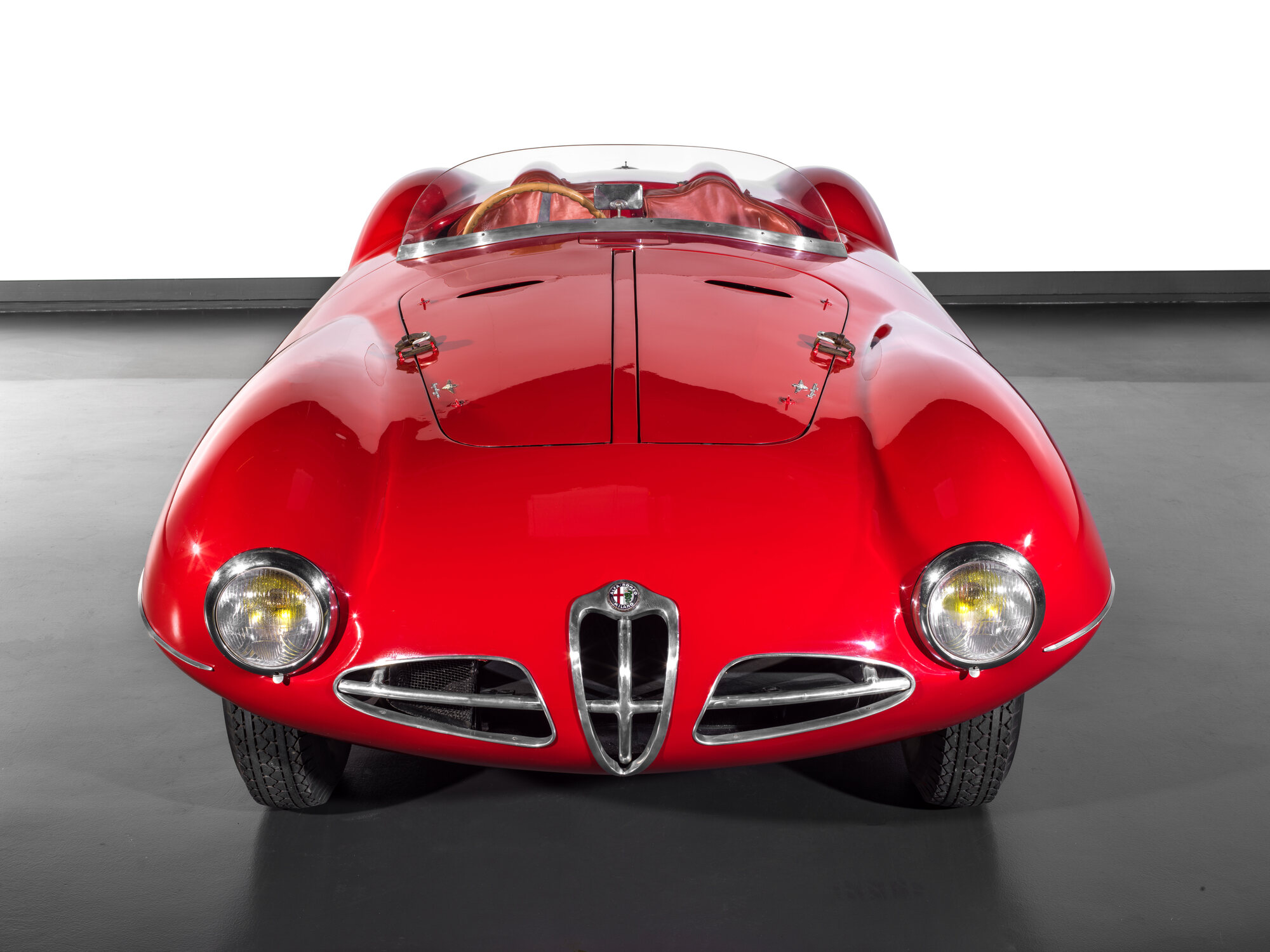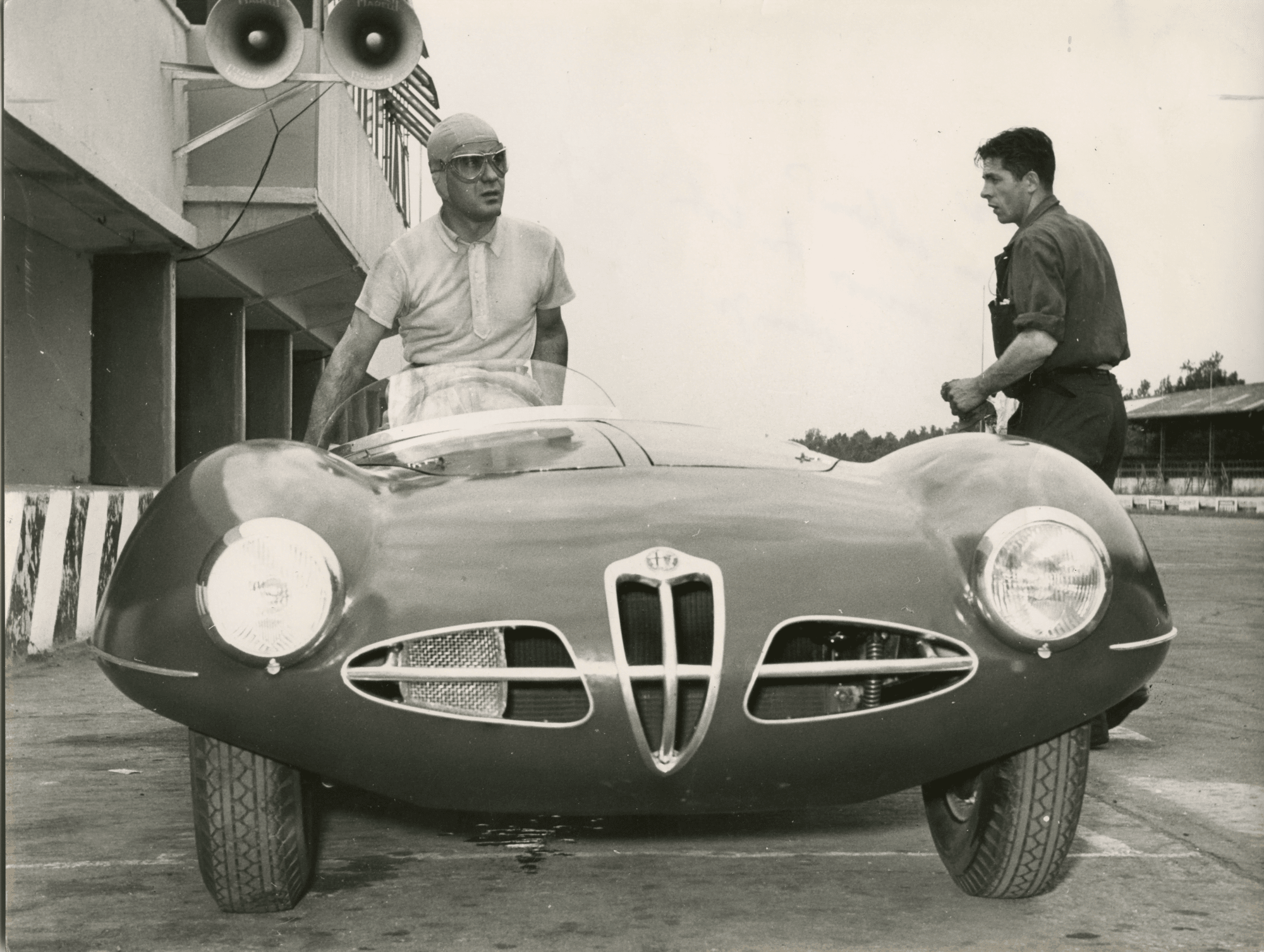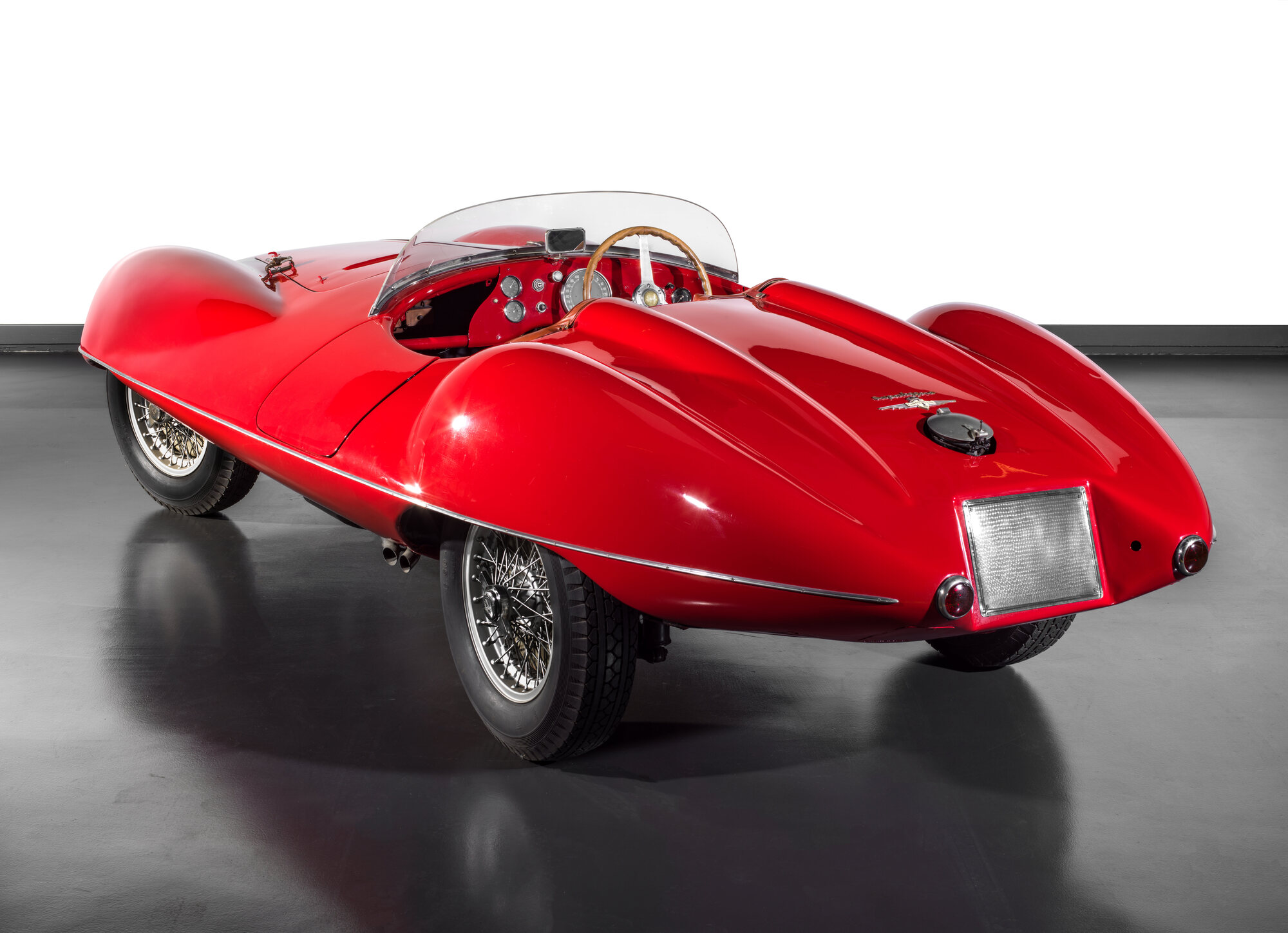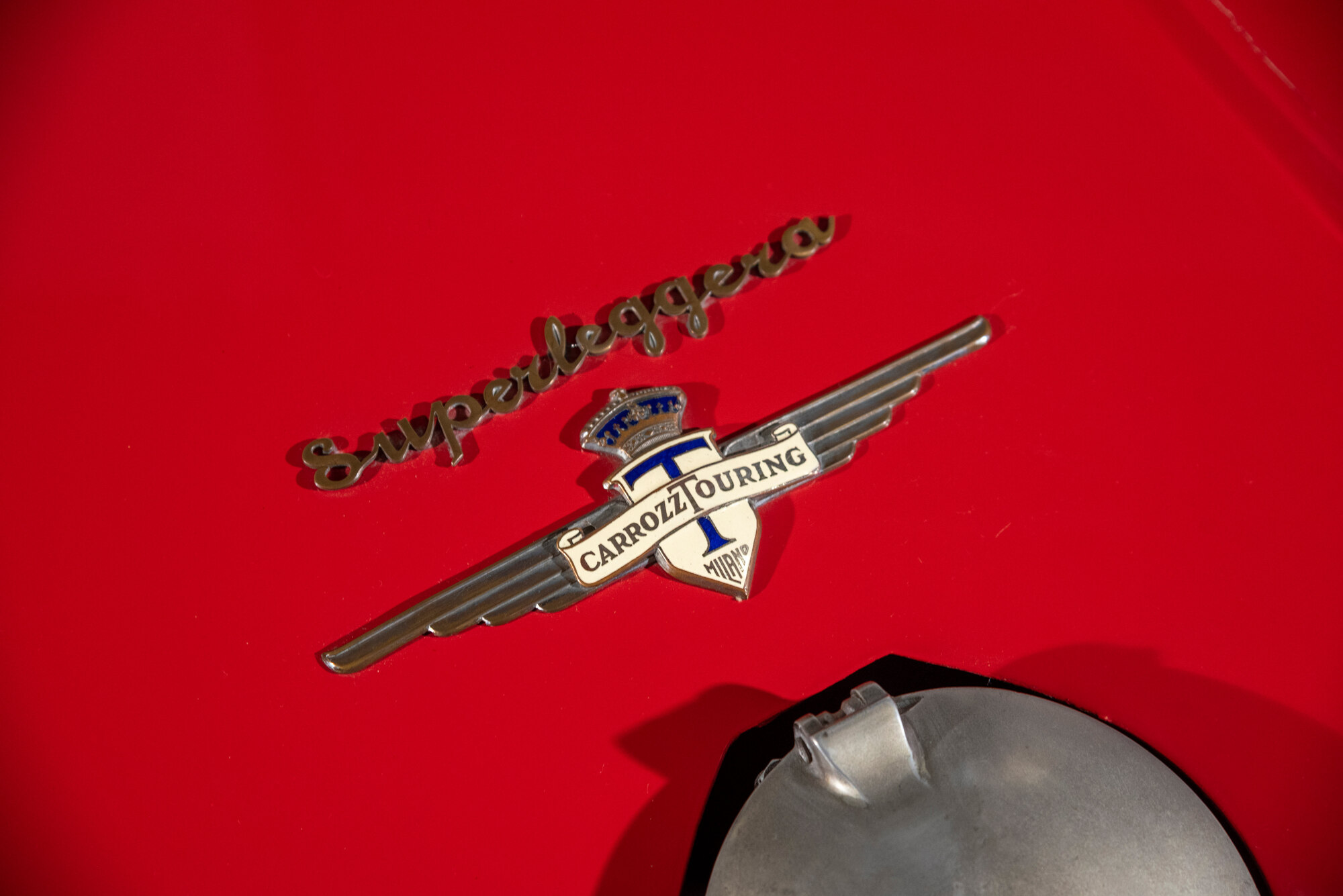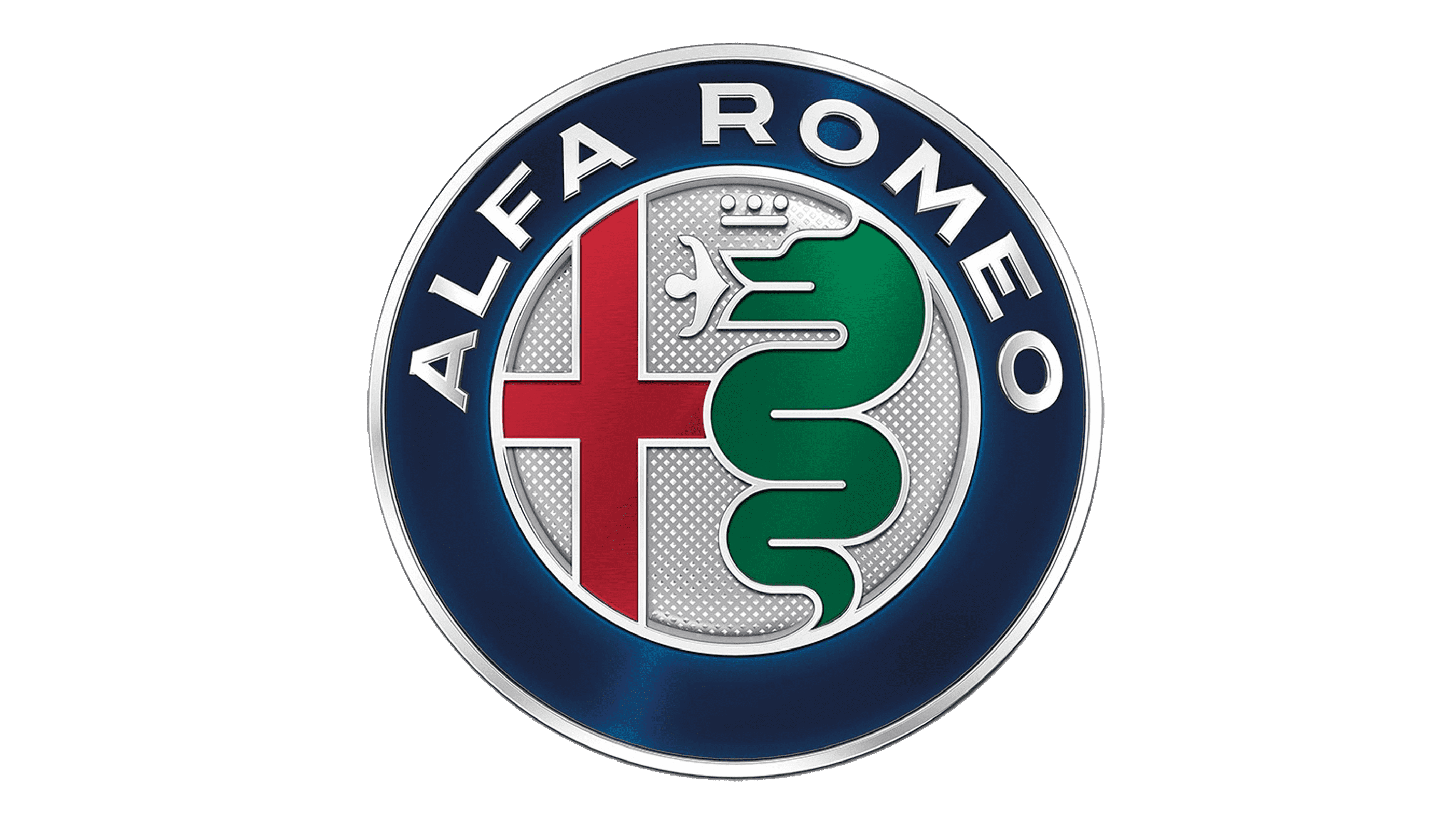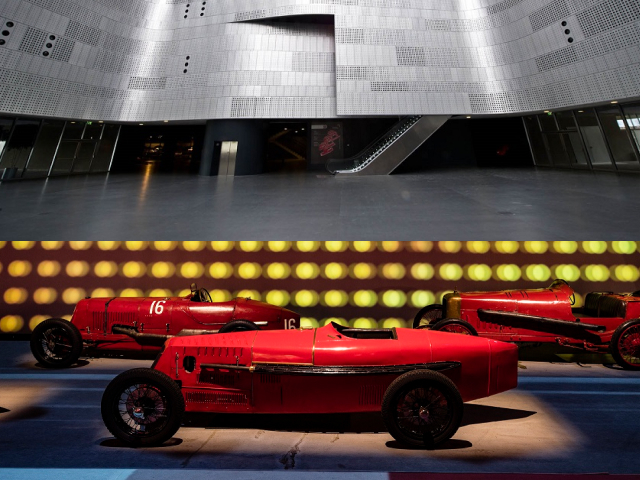1952 Alfa Romeo Disco Volante
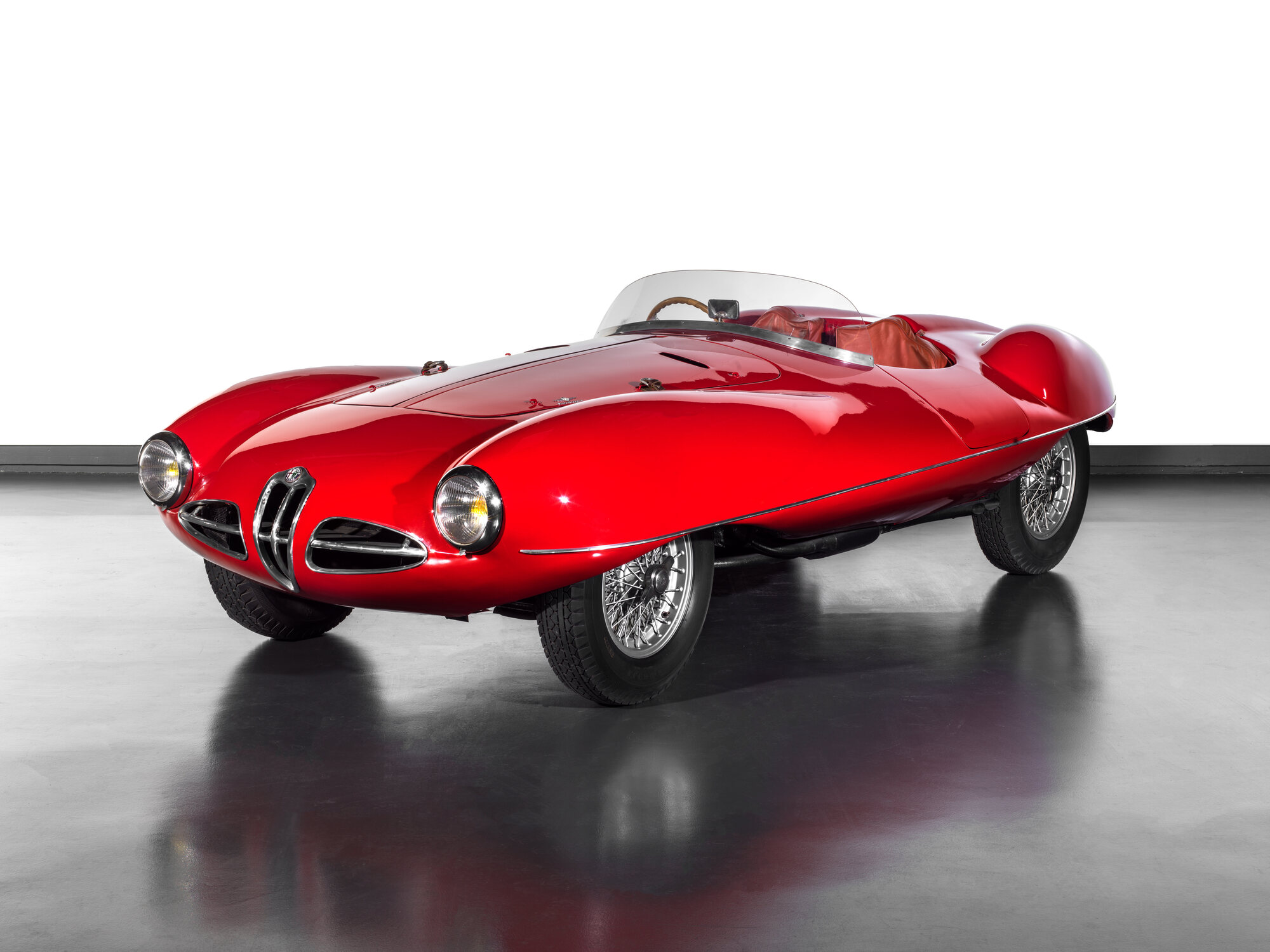
The descriptions of the Classic Cars in the Directory were partly generated or supplemented with the help of artificial intelligence (AI). The content may occasionally not always be entirely accurate or factually correct despite careful checking.
Conceived in 1952 with an open 'barchetta' bodywork and built as a single model, this car with its extraordinary and futuristic aerodynamic shape was he result of a courageous project that saw Alta Romeo collaborating with the coachbuilder Touring from Milan. The result was a car that matched chassis and bodywork in the best possible way, made using the Superleggera (ultralight) technique, re. a skeleton of thin welded steel tubes, covered by a light alloy outer 'skin' and attached to the chassis.
The unprecedented bodywork was characterised by a biconvex profile and flattened shape, reminiscent of an aircraft wing, with lenticular shaped bodywork that was intended to rewrite the laws of aerodynamics and at the same time appeal to the overseas market. Based on this experimental prototype Alfa Romeo later built a dozen or so competition models with 2-, 3-, and 3.5-litre engines. One of these cars, a 6C 3000 CM, driven by Juan Manuel Fangio, finished second overall in the 1953 Mille Miglia.
In a similar model Fangio also won the first Supercorte maggiore Grand Prix, held in Merano in the same year. The model donated to the Museum by Alta Romeo in 1956 was built with a 2-litre engine and fitted with the powerful 6-cylinder engine of the 6C 3000.
